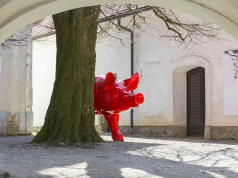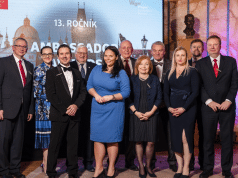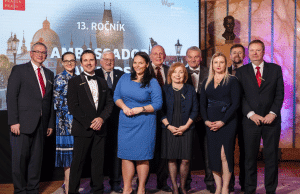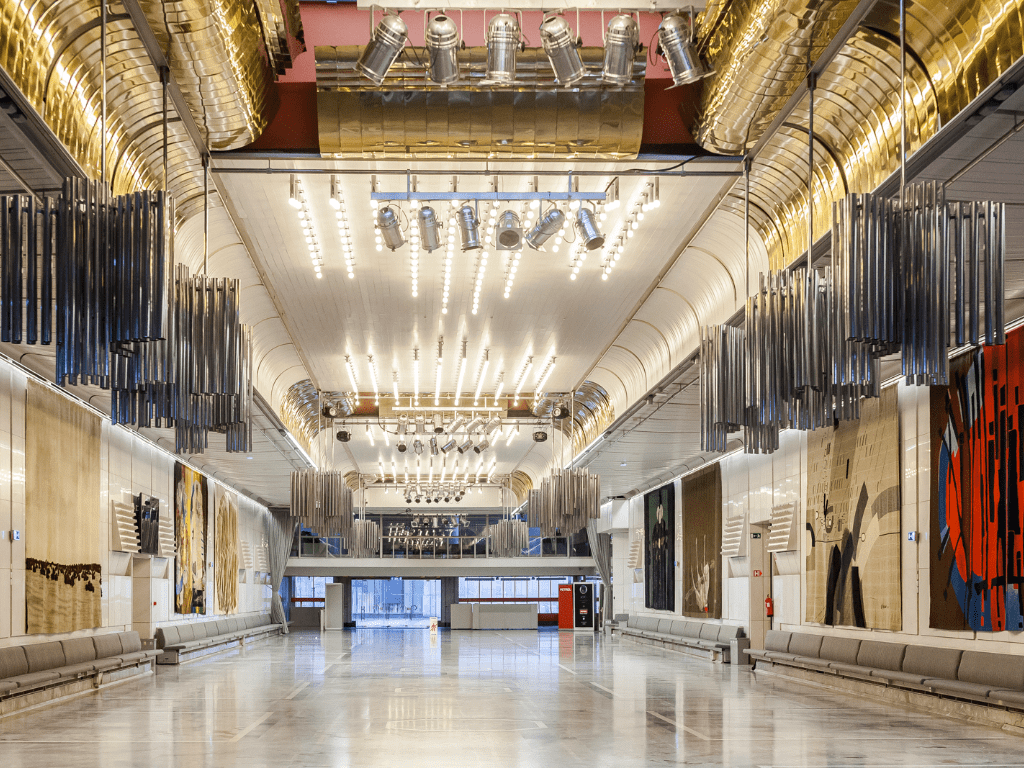
These precious large-scale tapestries still to this day impress with their classic character signed with the modern approach. To give them back the original shiny look, Cankarjev dom got this year the forty years old tapestries professionally cleaned by Belgian company De Wit Royal Manufacturers which is specialised in the conservation and restoration of tapestries and entrusted by clients like Louvre Museum, Museé de Cluny, and Spanish Patrimonio, to name a few.
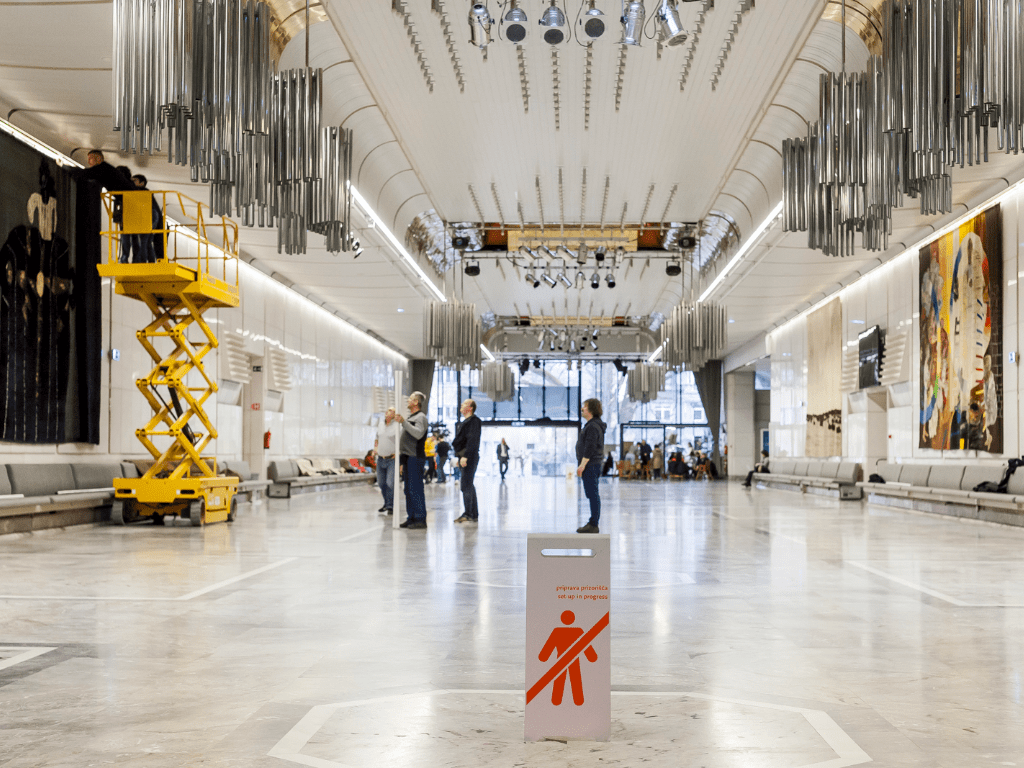
In February, the beautiful artistic artefacts of Cankarjev dom were brought back to their walls. But how has their story begun? In 1979, during its final phase of furnishing, some of the Cankarjev dom walls were still waiting for a decoration. As the building was so remarkable for its design and layover, the then Director of Ljubljana’s Museum of Modern Art, Zoran Kržišnik, who was also at the time the Chairman of the commission for art decorations of the Cankarjev dom, suggested to use the large-scale tapestries.
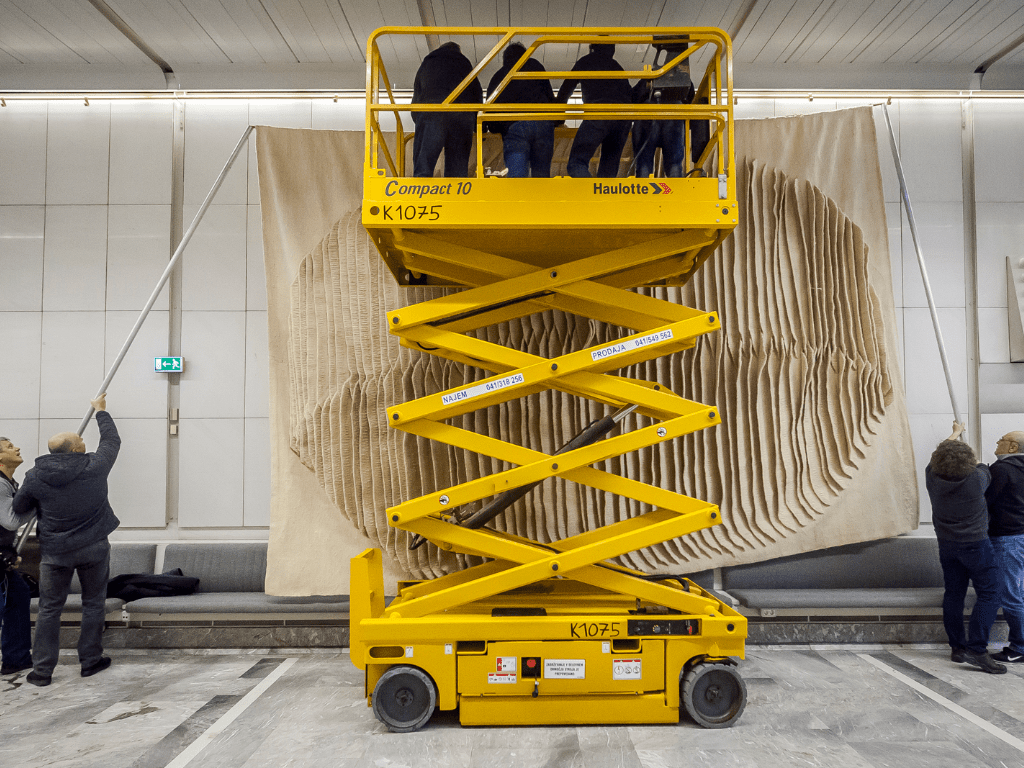
As Slovenian art historian Brane Kovič notices, tapestries are unique as “An art genre that is quite rarely in the forefront of modern creativity, but with its soft materiality is by all means an ideal counterweight to the high, typically cold walls.” The choice to use tapestries, made for one of the Slovenia’s most cherished and noticeable art interventions into any of the event venues of the time. For the creation of the tapestries, that were designed and manufactured between 1979 and 1980, Slovenian artists as well as artists from other Republics of the then Yugoslavia were invited.
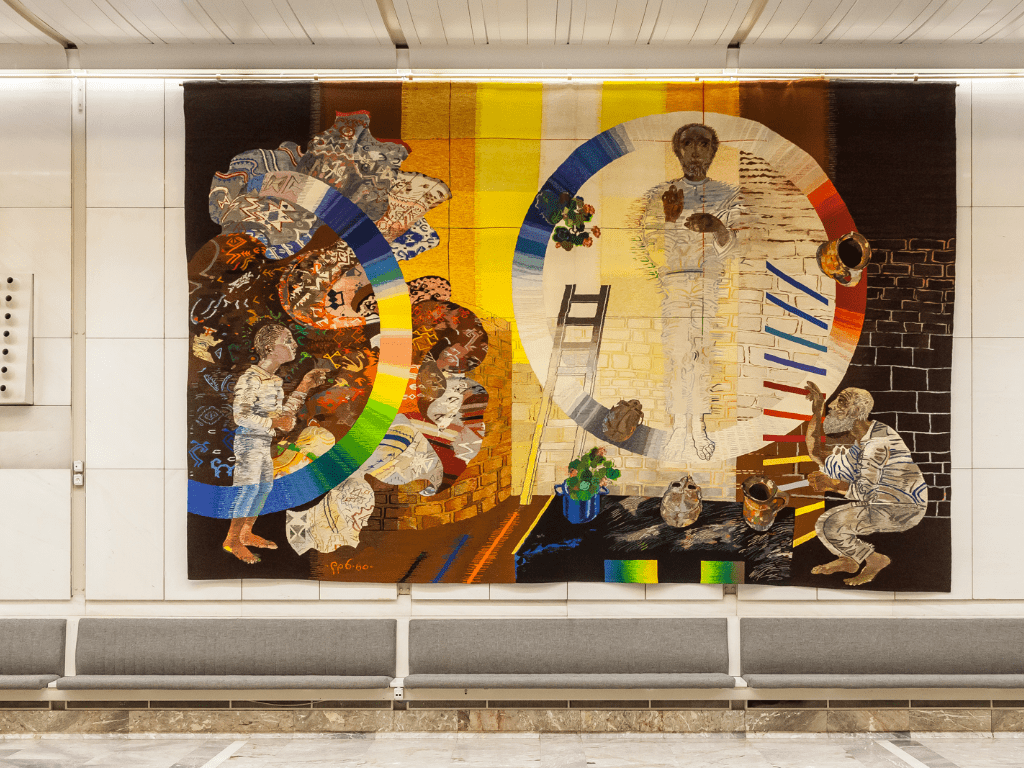
All involved were some of the most esteemed artists of all times of former Yugoslavia. This prestigious collection reaffirmed the significance of the Cankarjev dom as the central cultural and congress building. From Slovenia there were Janez Bernik, Jože Ciuha, Vladimir Makuc, Valentin Oman, and Lojze Spacal, while others were Jagoda Buić from Croatia, Mladen Srbinović from Serbia, Mersad Berber from Bosnia and Herzegovina, Milutin Kostić from Kosovo, Etelka Tobolka from Vojvodina, and Dimće Nikolov from Macedonia.
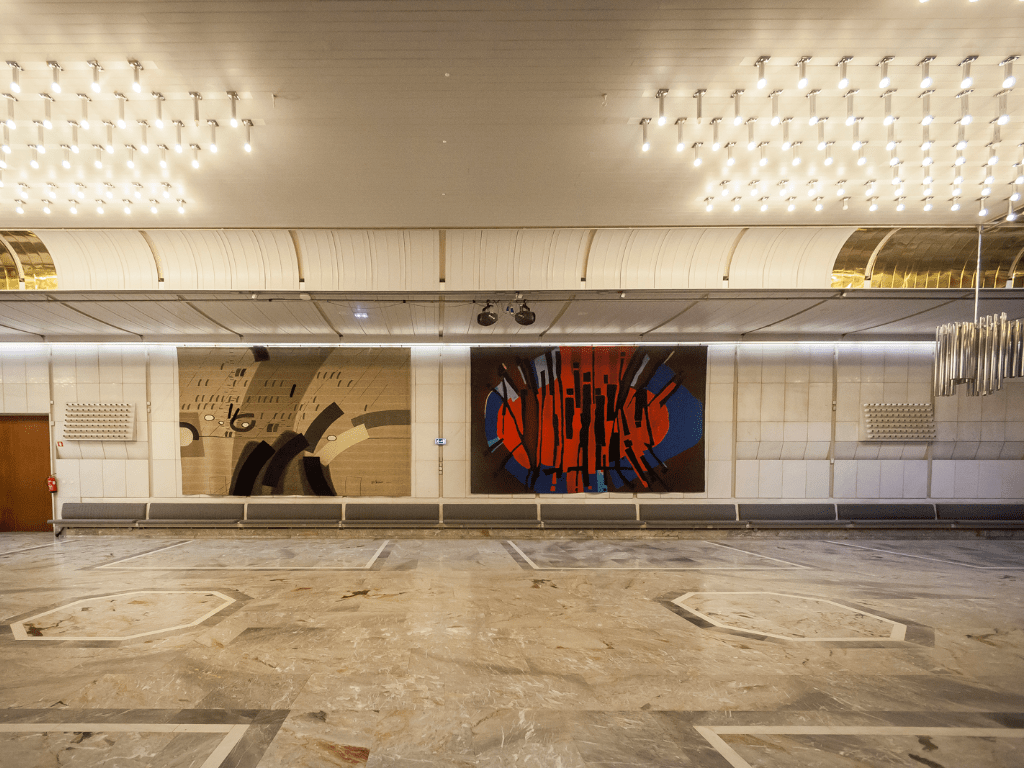
Tapestries adorn the Grand Reception Hall, as well as the foyer of the magnificent Gallus Hall, and the reception. With the tapestries, Cankarjev dom was marked as a cultural centre which in its programmic vision cherishes the diversity, authenticity and identity of cultural traditions of individual nations and nationalities. This most important Slovenian congress centre is still following its 40-year-old mission of being the meeting point for cultures and ideas, while its vision is being continuously nurtured for the future generations to come. For those who love events. And for those who love arts.



